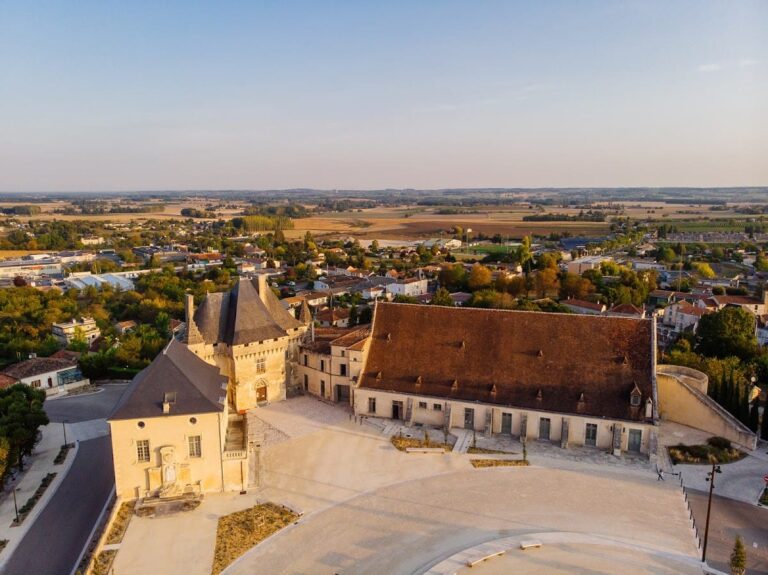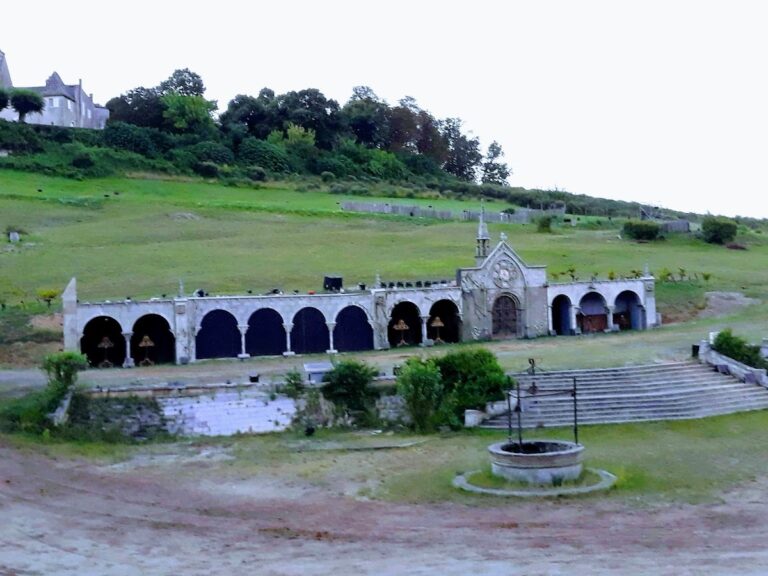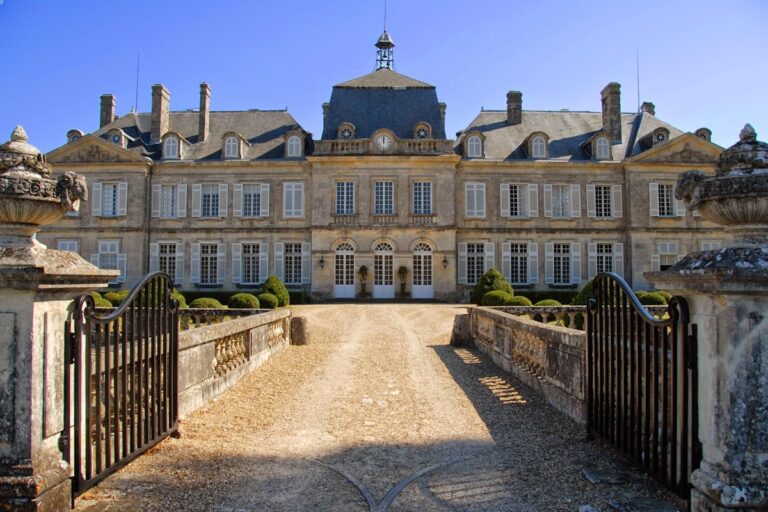Château de Montguyon: A Medieval Fortress in France
Visitor Information
Google Rating: 4.2
Popularity: Low
Google Maps: View on Google Maps
Official Website: www.montguyon.fr
Country: France
Civilization: Unclassified
Remains: Military
History
The Château de Montguyon is located in the town of Montguyon, France. This medieval fortress was originally constructed by the local feudal civilization during the 11th century, with its earliest recorded mention dating to 1080. Serving as a vital defensive stronghold, the castle played an important military and political role for several centuries.
In the early 15th century, specifically in 1404, the castle changed hands through marriage when Rosine de Montaut-Mussidan brought it as a dowry to Guy II de La Rochefoucauld, a nobleman who held lordship over Verteuil and Barbezieux. The La Rochefoucauld family retained ownership for nearly three centuries. During the Hundred Years’ War, the fortress came under English control but was liberated in 1451 by the French commander Dunois following the Battle of Montguyon.
The castle’s role evolved during the French Wars of Religion in the late 16th century. It became a Protestant stronghold and hosted Henry of Navarre, who would later ascend to the French throne as King Henry IV, several times between 1571 and 1586. This association highlights its strategic and symbolic importance during this turbulent period.
In the early 17th century, King Louis XIII and Queen Anne of Austria visited the castle, staying there on July 7 and 8, 1621, reflecting its status as a significant noble residence. Later in 1683, the barony was acquired by Pélagie de Rohan-Chabot, initiating the Rohan family’s tenure, which lasted until the upheavals of the French Revolution.
The castle suffered a severe blow in 1793 when it was struck by lightning, causing a fire that left it largely in ruins. Following this destruction, the estate was sold as national property. Significant restoration efforts did not begin until the late 20th century. From 1980 to 1984, the stables were restored by the Association pour la Sauvegarde du Patrimoine Historique de Montguyon (A.S.P.H.M.). Later, between 1996 and 2001, the same organization undertook consolidation and rebuilding of the castle’s fortification walls. The historic value of the site was officially recognized with the tower listed as a historic monument in 1929, and in 2004, this status was expanded to include the entire castle, its remains, and the former stables.
Remains
The Château de Montguyon occupies a prominent position atop a rocky outcrop, a site chosen for its natural defensive advantages. The castle’s layout centers on a courtyard, or basse-cour, which encloses stables constructed within this open space. The main residential structure, known as the corps de logis, is accompanied by a tower that dates back to the 13th century but was modified during the 14th century to better suit the evolving defensive needs.
The tower originally soared to an estimated height of about 50 meters, including its roof, making it a formidable watchpoint. However, after the fire caused by the lightning strike in 1793, much of the tower was reduced to ruins. Further damage occurred when part of the keep collapsed in 1982, following an earthquake. Despite these losses, the tower remains a defining feature of the site.
One notable defensive element is the traces of an ancient drawbridge at the castle’s entrance, signaling a controlled access point designed to resist attackers. Additionally, the complex is framed by northern and southern ramparts, which formed an enclosing barrier around the fortress and its courtyard. Within the walls, an old well supplied water to the inhabitants, testifying to the castle’s self-sufficiency during sieges.
Inside the residential quarters, inscriptions etched onto the walls of the second floor display maxims, suggesting that the castle’s interiors incorporated decorative or instructive elements for residents and guests. In front of the raised rocky spur lies the former stables, their restoration ensuring that these auxiliary buildings retain their historical character and remain part of the castle ensemble.
Together, these features illustrate the Château de Montguyon not only as a military stronghold but also as a noble residence that adapted over centuries to the needs of defense, habitation, and representation.










